- Home
- Alec Waugh
Where the Clocks Chime Twice Page 9
Where the Clocks Chime Twice Read online
Page 9
“What happened then?” I asked.
“His friends bailed him out as soon as they heard of it. Typical Dominica’.”
Was it? Maybe it was. But it seemed to me that it was authority, not Haweis, that had been made to appear ridiculous. By any ultimate standards, Haweis was in the right.
He was one of the first people that I met when I arrived in Dominica. I had expected that he would have become, as old bachelors so often do, ill-kempt and scrubby. He hadn’t. He was a short, neat figure, with thin white hair and an even, greyish-brown complexion. Without indulging in any sartorial eccentricities, he looked an artist. Just as the sitting-room of his house looked like an artist’s. It had the practical untidiness that an artist’s studio should have. It looked a workshop.
He showed me some of his pictures. He had once specialised in fish, but now he was concentrating on vegetation. The chief thing that struck me about his paintings was their sense of movement. They were representational, though occasionally he adopted a cubist technique. There was one canvas of a man planting cane. The body did not join up with the legs, but there was movement there. In particular, I admired a group of carrier girls, striding with baskets on their heads down a jungle path. They were fine Amazonian creatures, with bright blouses and vivid turbans, but they seemed colourless and dwarfed against the rich green background of the forest.
He smiled when I told him that.
“I only put them in there as a measuring-rod. My father used to say about the Bible, It may not be the word of God, but the word of God is in it’. That picture may not be the forest, but the forest’s in it. At least, I hope it is.”
He spoke unaffectedly about his work. “I care as much about my painting as I ever did. But I don’t seem to care what other people think about it any longer. I’d just as soon not sell my pictures. I like to have them round me.”
I had expected to find in him a certain sourness, a certain acidity; certainly an attitude of contentiousness. I didn’t. Apart from the charm of his manner, which was very real, apart from an inherited and inherent air of ease and breeding, what struck me most about him was the sense he gave of distance, of seeing the human scene in focus.
I asked him the inevitable question. What was it that had brought him here? He smiled at that.
“You know the old beachcomber story of a man seeing a pretty native girl on a verandah and letting his ship sail on without him. It was a mango tree that brought me here. Its native owner was about to cut it down; the only way to save it was to buy the ground it stood on.
“I’d like to see that tree,” I said.
He pointed across the valley. There it stood in all its majesty, spreading its branches to the sunlight. It was not yet the mango season. I pictured it as it would be in a few weeks’ time, heavy with swelling fruit.
“Why on earth did they want to cut it down?” I asked.
He laughed.
“It wasn’t any use to them. I didn’t know it at the time, but mangoes won’t bear above fifteen hundred feet. We’re over two thousand here. They’d have sold it as firewood. Charcoal fetches a good price. They were quite right, of course. I see that now.” He paused, then smiled. “I felt rather cheated when I found it out. As a man might who gives up his career for a girl who turns out worthless. But that’s nearly twenty years ago. I don’t feel that way now. They were right, but so was I, though I didn’t know it then. I’m glad I spared it. It’s enough to be beautiful; there’s no need to bear fruit as well.”
All Dominica is in that comment.
4. An Island to be Explored
Air-Passengers for St. Thomas change planes at Puerto Rico, as do most passengers who are bound for or across the Caribbean. San Juan has become the most important provincial air-junction in the world, but its airport is all that the average tourist sees of the island of which it is the capital. A Frenchman once wrote a book called England; the Unknown Isle, and the same sub-title could serve for an essay on Puerto Rico.
The third largest island in the Caribbean, it was for centuries the most neglected. When the Spanish-American War broke out in 1898, the war correspondents who hurried to the public library ‘to read it up’ could find practically nothing on it in the English language. Discovered by Christopher Columbus on his second voyage, its first Governor was Ponce de Leon. On sighting the harbour of San Juan, he exclaimed, ‘Ah, que Puerto Rico!’ (What a rich port!). And it was prophetic of the island’s destiny that that name should have been chosen; its subsequent value to the Spaniards was just that—its value as a port.
The Spaniards crossed the Atlantic with a triple-pronged objective, ‘Glory and Gold and God’, but they soon lost interest in the colony that had no mines. Pushing west to Peru and Mexico, they neglected Jamaica and Hispaniola. But though Puerto Rico had no rich minerals, the prevailing trade winds gave a strategic value to San Juan. The country that owned its harbour was well placed to control the convoys of bullion flowing east from Panama, and its citadel was highly fortified to resist attack. John Hawkins lost his life there. Drake failed to land. Cumberland held it for a little, but fever killed off his troops. Through the long wars of the seventeenth and eighteenth centuries, when Barbados alone among the British islands was uninvaded, the Spanish flag flew from the ramparts of the Morro Castle. It became the Gibraltar of the Caribbean.
Puerto Rico was a garrison, no more and no less than that; a fact that presumably explains the distinctive nature of its population. Only a small proportion of its natives have marked African strains, the crinkled hair, thick lips and nose that you will find in Guadeloupe, Antigua, and Jamaica. The average Puerto Rican has a darkish skin, but straight black hair and delicate European features. This cannot be due to the original Indian strain, for here, as in Hispaniola, the Indians were eliminated within a few years of the occupation. Very few Spanish women came out to the colony during the first decades, and it must have been with imported Africans that the Spanish troops formed their alliances. The plantation system was, however, not developed in Puerto Rico to the extent that it was in the sugar islands, in Jamaica, Barbados, and Martinique. The number of slaves imported was limited to the needs of a garrison rather than an agricultural community. As a result, the Spanish strain predominated over the African.
Spain valued Puerto Rico for the protection it provided for its commerce; a value that was not to be assessed in terms of a credit and debit balance-sheet. It was not expected to pay dividends, and its successive Governors appear to have been more liberal, more beneficent, than those who were appointed to Peru and Mexico. There was little civil disorder; little resentment against Government, and the 1820s found Puerto Rico, with Cuba and San Domingo, still loyal to the Spanish Crown; a loyalty that was increased by the recruitment from Haiti, and certain of the new Republics, of colonists who did not wish to lose their link with Spain. Puerto Rico was nicknamed ‘Ever the loyal isle’. Its relations with Madrid were cordial, and in the very year that the Spanish-American War broke out, Spain, through the diplomacy of Luis Munoz Rivera, the father of the present Governor, ratified a constitution that granted the colonists a high measure of autonomy. The majority of Puerto Ricans were as contented with their lot as any group of inhabitants in an imperfect universe. It was merely the caprice of history that made them citizens of the United States.
When the Maine was exploded outside Havana, few Americans can have visualised the acquisition of Puerto Rico as a war objective. Yet, in point of fact, when peace was signed Washington had no alternative. Spain could scarcely be allowed to retain a possession in the New World. Puerto Rico was in no position to conduct her own affairs as an independent republic. Moreover, since the Civil War, Washington had recognised the need for a naval base in the Caribbean. For some time it had been negotiating with Denmark for the purchase of the Virgin Islands. San Juan provided an immediate solution to that problem.
It was not at the start a change of régime that the Puerto Ricans themselves particularly welcomed, and littl
e was to happen in the immediate future to engender filial feelings. Washington was no more paternal than Spain had been. The Union is in large part self-built, its citizens have been encouraged and trusted to conduct their own affairs. The Puerto Ricans were allowed an equal latitude; in consequence, the island returned to the long obscurity that had shrouded her activities since the Morro Castle had rendered her impregnable. It was not till after World War II that Americans as a whole, through a slow process of gathering awareness which was startled into full recognition by the attempt organised by Puerto Ricans on President Truman’s life, came to realise quite what a problem they had on their hands.
It was slowly, very slowly, that that awareness came. It was not till the middle 1930s that Eleanor Roosevelt was to be shocked by the conditions under which so many of her fellow citizens were living. Later the spread of the Pan-American network was to convert San Juan into an airport, where many Americans were forced to spend an hour or two in transit. The experience annoyed them and disturbed them. They were subjected to customs inspections which seemed unnecessary, since they were in U.S. territory, and which were conducted by officials who spoke little English; they took a drive through a city supposedly American where they could not make themselves understood; they saw a slum quarter that matched in squalor anything that Kingston, Havana, or Port au Prince could offer, a slum quarter which was not even built on solid ground, but in one of the lagoons that skirted the main city : poles being stuck into the mud to support wooden shacks. A sense of responsibility was aroused, and Puerto Rico crept into the news. By the later ’40s she was in the headlines. Continued unemployment had led to mass emigration into the United States. Puerto Ricans were citizens, and immigration and quota regulations could place no check upon their movements. They were going up at the rate of a thousand à month, speaking little English, unused to cold, to find themselves huddled into Harlem tenements, with no more security of employment than they had known at home; to drift, many of them, into crime.
In synopsis the problem is this: two million American citizens speaking little English, trained in a Spanish tradition with little if any appreciation of American standards and ideals, living in an island that never has been self-sufficient, that never has paid dividends; an agricultural community the extent and nature of whose soil cannot find full employment for its population; a territory in which there is a strong enough nationalist minority to stage a revolution and attempt the assassination of the President. That is the problem, or rather that is the dark side of the problem. For there is a bright and hopeful side. There is the immense effort now being made under the inspiration of Luis Munoz Marin, the son of the Luiz Munoz Rivera, who arranged the original treaty of autonomy with Spain, to reorganise the financial and industrial life of the island under a scheme that he has labelled ‘Operation Bootstrap’.
My visit to the island fortunately coincided with the opening of the one-hundredth new industry that has been started to implement this policy. In a speech at the inaugural ceremonies, its administrator, Teodoro Moscoso, explained the scope and purpose of the project.
“There is,” he said, “an average of 645 of us crowded on each square mile of land, and we are labouring under a lack of balance between resources and population density to a degree which is present in few areas of the world. Nowhere in the world can 645 persons per square mile subsist on a purely agricultural economy except at an extremely low level. The island is suffering from an industrial density of population and an agricultural production pattern. The land problem is something which we cannot change. We cannot stretch our land nor put into it minerals which are not there. What we can do is to adopt new techniques and learn new skills. The task in which we are engaged is to create the conditions for industry to develop and prosper, and a financial and social climate favourable for rapid economic development. We have brought a hundred new factories to the island.”
There are at the moment of writing some 100,000 semi-employed persons in Puerto Rico. For only some 15,000 do the hundred new industries provide full employment. Another seven or eight hundred industries will be required. In order to attract capital from the mainland, there has been a remission of Federal income-tax for fifteen years. A great, great effort is certainly being made.
To attend the celebration of this one-hundredth industry, some sixty pressmen, publicists, and bankers were brought down from the mainland. I was invited to tag along. The junket was arranged to show us the type of industry that was being undertaken, and the type of island for whose benefit the project had been devised. It was also intended that we should enjoy ourselves. There were no customs formalities at the airport. On the contrary, while the baggage was being sorted out, frothing daiquiris were served. In our rooms awaited each of us a leather zip-fastening brief-case containing a great number of brochures and tourist literature, stamped with our own names, and in the centre, above the island’s seal, with the title Operation Bootstrap.
It was a three-day programme. On the first day a nine-thirty start sent us off to a china factory forty miles west of San Juan. An early lunch was followed by a second forty-mile drive in the opposite direction for the opening of the one-hundredth industry —a blanket factory. Five names appeared on the list of speakers and I anticipated a full two hours of oratory. To my surprised relief no speech lasted more than seven minutes, and we were at liberty to examine not only the plant itself but an exhibition of the other ninety-nine new industries. Some excellent fish horsd’œuvres accompanied a rum-based swizzle. That evening there was a reception at the Governor’s palace, where we drank sweet champagne under the stars.
The next day was given over to a picnic—a pig-roast at the Louquillo beach. Swimming and sunbathing, cockfighting and local dances had been arranged. Ed Gardner was to stage a show with members of his Duffy’s Tavern. Fate was unkind. The weather could not have been worse. It was one of those grey, windy days that contradict more often than one would suppose the unqualified superlatives of the travel folders. It actually did not rain a lot, but it was no day for sunbathing and scarcely one for seabathing. Our hosts’ time-table was ruined. We had been invited for eleven, but it had not been planned to serve the meal until three o’clock. Owing, however, to the wind, the cold, and the grey skies, every guest on arrival made straight for the daiquiris. Ed Gardner lured us to his bandstand on the beach, but we went with glasses in our hands. It was soon apparent that by two o’clock at the latest an assault would have to be made on the six pigs that, transfixed on stakes, were roasting over open fires: those pigs had needed another hour.
For the Puerto Ricans, to whom pig-roasts are a part of their routine, it was no doubt a disappointing afternoon, but to a visitor like myself to whom it was a new experience, the occasion was both enjoyable in itself and interesting as an indication of the kind of life that Puerto Ricans lived.
For me that picnic was typical of the ten days I spent in Puerto Rico. Without getting the full enjoyment out of a pig-roast, I recognised how enjoyable one could be; in the same way, though I did not see the people or the place in the way that would have enabled me to write with any authority about the island, I recognised what there was to see and what I missed.
During the long week-end while the press representatives were being entertained, I took a number of drives into the country. With the junket over, I attached myself to a documentary film team that was preparing a picture on the sugar industry. The expedition took me round the north and west of the island, and south as far as Ponce. I returned to San Juan by air. I saw the actual terrain; I saw how intensively each section capable of agricultural exploitation had been developed; I realised the necessity for ‘Operation Bootstrap’; I saw how the north of the island differed from the south; I saw also how much the island had to offer to the visitor, the extent and beauty of its beaches, the picturesqueness of its mountain villages. I realised how little of the island you have seen if you have only seen San Juan. You might as well judge Ceylon from Colombo.
There are indeed certain resemblances, socially, between Colombo and San Juan. Each is a port. The lounges of its hotels are littered with the bustle of arrival and departure. Each is a large, prosperous, and important city whose residents have built up for themselves a personal and individual life, independent of and indifferent to the comings and goings of these visitors. In San Juan, as in Colombo, the tourist is conscious of an animated, busy life going on around him in which he has no part. San Juan possesses a number of hotels, at least two of which are classified de luxe. They were both booked solid. A number of the visitors were holidaymakers, staying some of them for a month. At the same time there is no resort atmosphere in either the Caribe Hilton or the Condado; each is self-contained, a world of its own. My room faced not upon the sea but upon a minor thoroughfare. All day long horns honked below my window. I looked out upon a series of apartment houses. An alien city lay about me. In Charlotte Amalie, Miami, Cannes, and Montego Bay the tourist feels that the whole locality has been built up for and is devoted to his tastes and needs, that the beaches, the bars, the night-clubs, the flowered terraces, the pools, the smart expensive little shops have all been put there for his pleasure. As indeed they have. There is no such atmosphere in San Juan. Though San Juan can sell you anything you need, it has no shopping centre. The smart shops are scattered through the town. On occasions, such as New Year’s Eve, the old families of Puerto Rico will attend at the Candado, sumptuously attired in silk and taffeta and brocade, of an unmodish cut but beautifully embroidered; young Puerto Ricans will bring their girls to dine and dance there, but the real life of the city is staged in private houses.
A considerable effort is being made to develop the island as a vacation centre, but the effort, very wisely, is not being concentrated upon the capital. San Juan with its two or three first-class hotels is the most comfortable airport with which I am familiar. A couple of days can be spent there very profitably, loitering through the narrow streets of the old city, visiting the Morro Castle— which is so capacious that a freak nine-hole golf-course has been laid out within its walls; as you lay the basis of a suntan, you can enjoy the best rum-based drink that I have ever tasted, a long fruit punch based upon the local Don Q rum and flavoured with pineapple. In the small restaurants of the old town you can sample excellent colonial dishes. If you have letters of introduction to any residents, you will be introduced into a pleasant social world of picnics and clubs and cocktail parties. But to get the distinctive flavour of Puerto Rico you need to get into the country and the country towns.

 A Spy in the Family
A Spy in the Family Love in these Days
Love in these Days The Balliols
The Balliols Kept
Kept Fuel for the Flame
Fuel for the Flame Wheels within Wheels
Wheels within Wheels The Sugar Islands
The Sugar Islands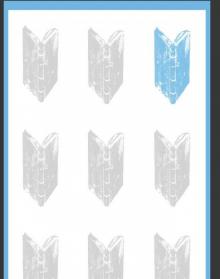 No Truce with Time
No Truce with Time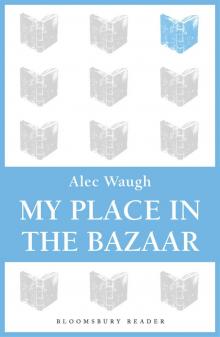 My Place in the Bazaar
My Place in the Bazaar Thirteen Such Years
Thirteen Such Years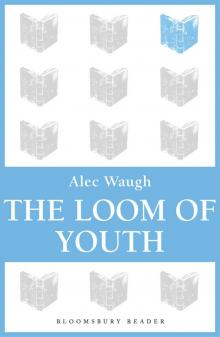 The Loom of Youth
The Loom of Youth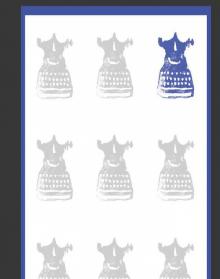 A Year to Remember
A Year to Remember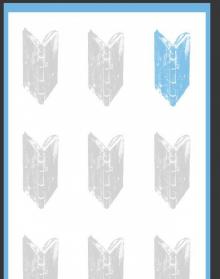 A Family of Islands
A Family of Islands Brief Encounter
Brief Encounter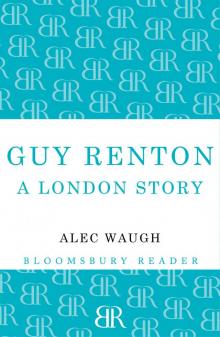 Guy Renton
Guy Renton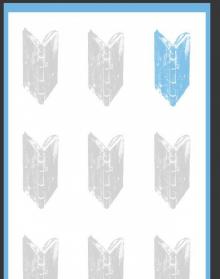 So Lovers Dream
So Lovers Dream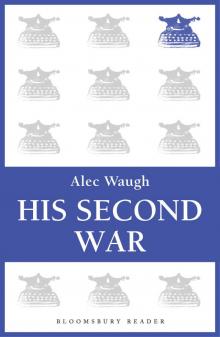 His Second War
His Second War My Brother Evelyn & Other Profiles
My Brother Evelyn & Other Profiles The Mule on the Minaret
The Mule on the Minaret Sir!' She Said
Sir!' She Said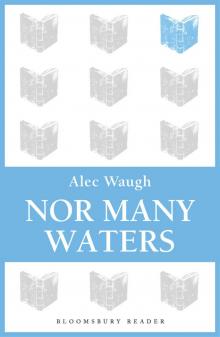 Nor Many Waters
Nor Many Waters The Fatal Gift
The Fatal Gift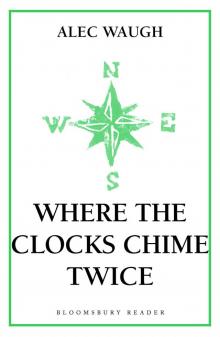 Where the Clocks Chime Twice
Where the Clocks Chime Twice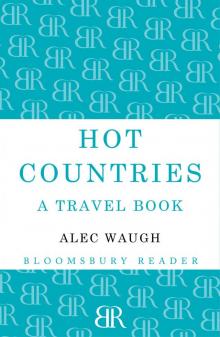 Hot Countries
Hot Countries Unclouded Summer
Unclouded Summer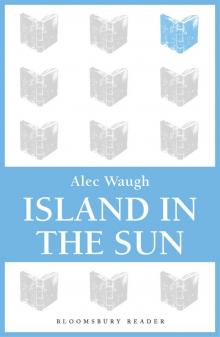 Island in the Sun
Island in the Sun